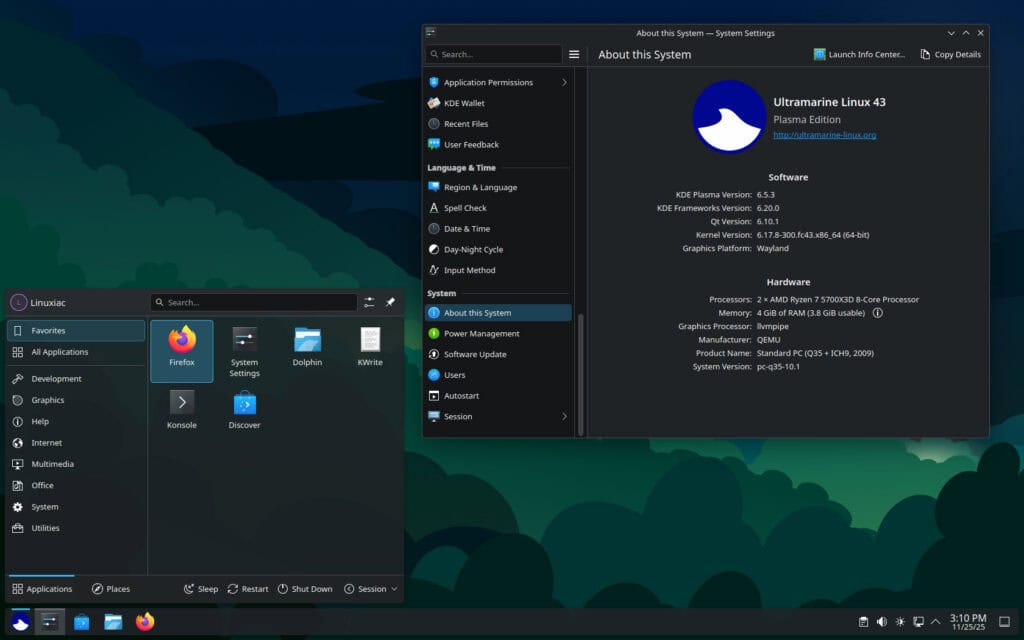Only a month after the previous 42 release, Ultramarine Linux 43 is now out, powered by kernel 6.17 and based on Fedora 43. Developed by Fyra Labs, the distro bets on the Btrfs filesystem under the hood, and it is now beginning with the retirement of Ultramarine’s long-standing “Flagship” designation.
With that said, the Budgie edition, which previously held that role, is no longer the recommended default. The project notes that its original rationale for choosing Budgie was that Fedora did not offer it at the time.
But now Ultramarine is formally recommending the Plasma Edition going forward. According to devs, this change doesn’t remove Budgie from the lineup; it simply becomes “Budgie Edition,” still fully supported and updated with the latest fixes as the desktop approaches its 10.10 release.
On the Plasma side, Ultramarine 43 ships Plasma 6.5.3, which brings a more polished interface, numerous bug fixes, and improved application permission management.

For Budgie users, only the branding changes. Xfce users will notice the switch from the unmaintained Materia theme to Orchis, since Fedora dropped Materia from its repositories. After upgrading, users must manually select Orchis in the Appearance settings and enable the “Set matching xf4wm theme” toggle to apply consistent theming.
The GNOME edition moves to GNOME 49, where upstream has removed all Xorg support. Ultramarine recommends that anyone who still depends on Xorg—for example, users with older hardware or specialty configurations—should consider switching to Xfce. GNOME’s renamed applications also appear here, with Papers becoming PDF Viewer and Showtime renamed to Video Player.
Moreover, Ultramarine 43 also introduces a public preview of Readymade, the project’s ready-made distribution install images. The devs state that Readymade has reached a point where they are comfortable offering it for full-disk installations.
Taidan, Ultramarine Linux’s desktop configuration and first-boot setup system, also receives updates. Besides inheriting the fixes from 42.1, it regains the option to install RPM packages, rather than relying exclusively on Flatpaks. While Flatpaks remain the recommended choice for security and compatibility, the RPM option helps users with tiny disks—specifically, systems with under 20GB of storage.
Outside the desktop sphere, Ultramarine Linux 43 expands its hardware coverage. Raspberry Pi 4 images have finally been refreshed, resolving several long-standing graphical issues. Additionally, the release adds support for the Pinebook Pro: users can flash any aarch64 Preinstalled Image and run Ultramarine on the device, with more details available on the project’s wiki.
Surface images, however, are temporarily unavailable. The upstream project has not yet been updated for Fedora 43, so Ultramarine has applied a stopgap allowing upgrades to continue using Fedora 42 repositories. The team warns that results may vary until upstream support is updated.
Lastly, users who prefer performance-tuned kernels will find the CachyOS kernel available as a tweak in umcli and can be enabled or disabled with a simple command.
For more information, see the announcement.
